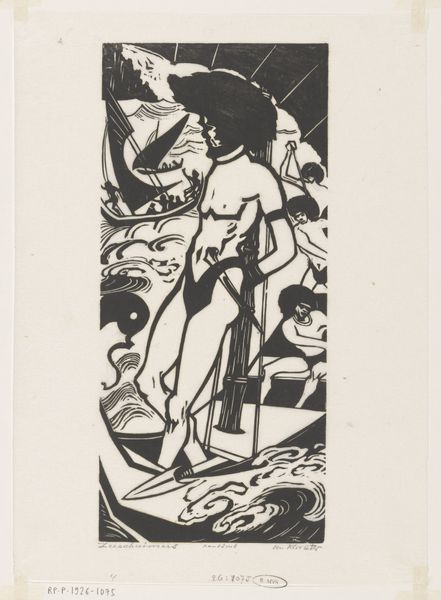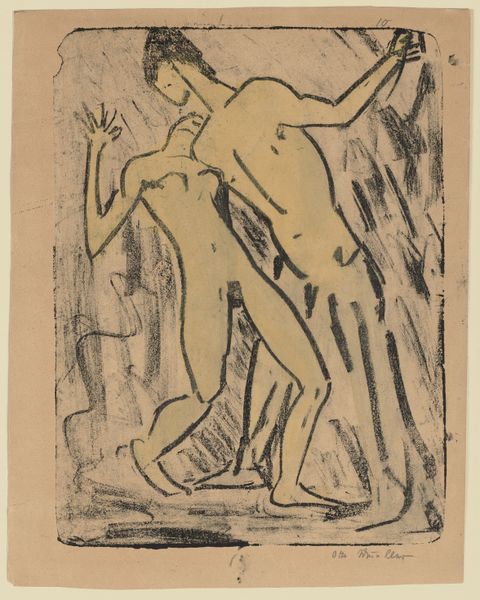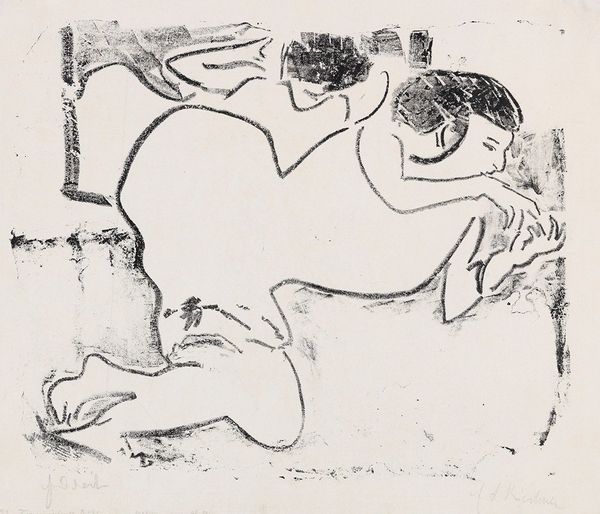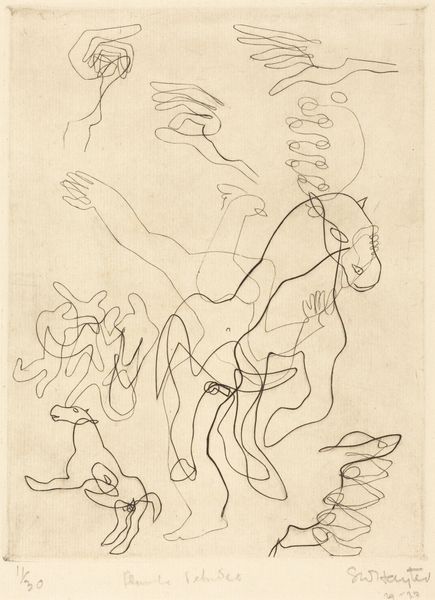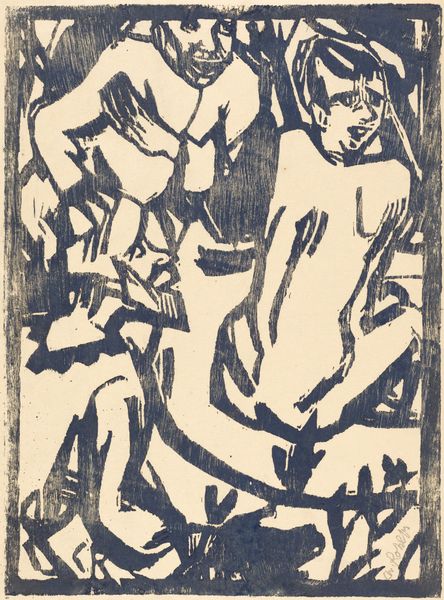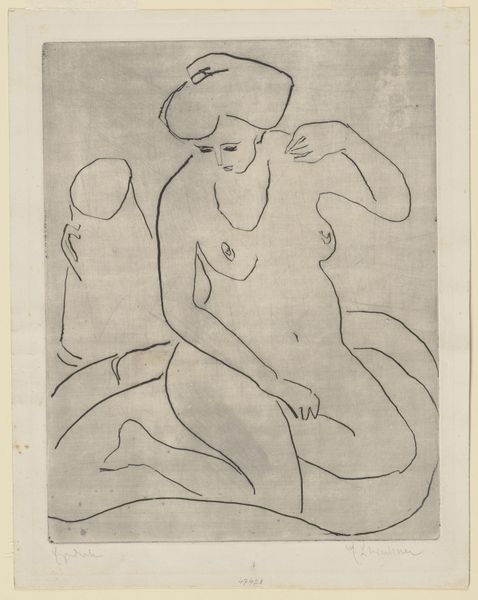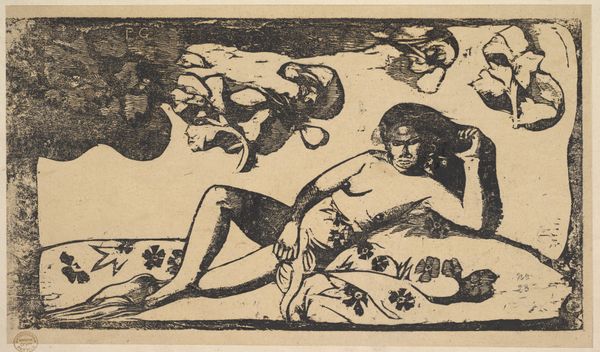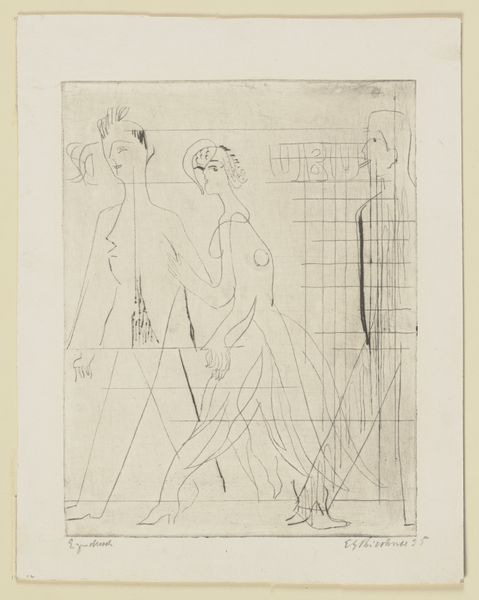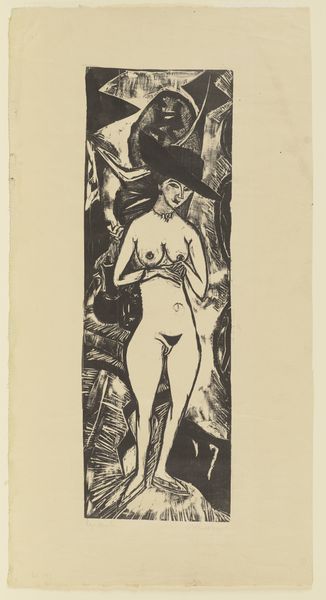
Naked Girls in the Studio (Nackte Madchen im Atelier) 1911
0:00
0:00
drawing, print, ink
#
portrait
#
drawing
#
imaginative character sketch
# print
#
pen sketch
#
german-expressionism
#
cartoon sketch
#
figuration
#
personal sketchbook
#
linework heavy
#
ink
#
idea generation sketch
#
ink drawing experimentation
#
pen-ink sketch
#
expressionism
#
sketchbook drawing
#
nude
#
initial sketch
Dimensions: sheet: 55.2 x 40.9 cm (21 3/4 x 16 1/8 in.)
Copyright: National Gallery of Art: CC0 1.0
Editor: Here we have Ernst Ludwig Kirchner's "Naked Girls in the Studio," created in 1911 using ink as a print. There's a raw, almost unsettling quality to the linework and the women's expressions. How do you interpret this work, particularly its emotional resonance? Curator: The power of this print lies in its Expressionistic distortion and its reflection of the fraught relationship between artist and model, viewer and viewed. Consider the German Expressionist movement itself, emerging in a time of rapid social change and anxieties around industrialization and urbanization. What might these figures tell us about Kirchner's perspective on female sexuality within that context? Editor: I notice a contrast between the woman standing, almost confrontational, and the one seated in the background, who seems more introspective. Was Kirchner consciously playing with these opposing roles? Curator: Precisely. Kirchner was interested in the psychology of modern life, and that includes dissecting the ways women were perceived and perceiving themselves. The studio setting itself is significant – it becomes a space of both artistic creation and potentially exploitation, or at least a power dynamic between artist and subject. How do these stark lines contribute to that tension, in your opinion? Editor: I think the harsh lines definitely enhance that uneasy feeling. It doesn't romanticize the female form at all; it feels very raw and honest. Curator: And what does that raw honesty tell us? Is it empowering? Is it critical? Remember, Kirchner’s work, and that of the Expressionists in general, prompts more questions than it answers. Understanding the gaze – who is looking, who is being looked at, and why – becomes a potent tool for unpacking its cultural significance. Editor: This has made me think about the act of drawing itself and its potential to either celebrate or critique its subject. I appreciate how this work makes you consider the broader context of its creation. Curator: Indeed, engaging with the layers of historical context and subjective viewpoints woven into the image lets us find connections to contemporary debates around representation and power.
Comments
No comments
Be the first to comment and join the conversation on the ultimate creative platform.
